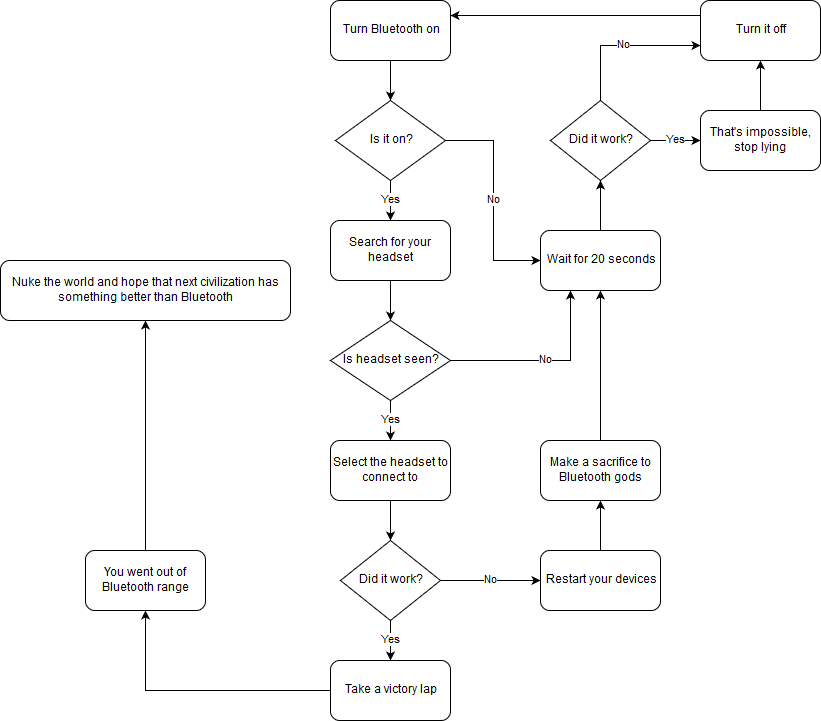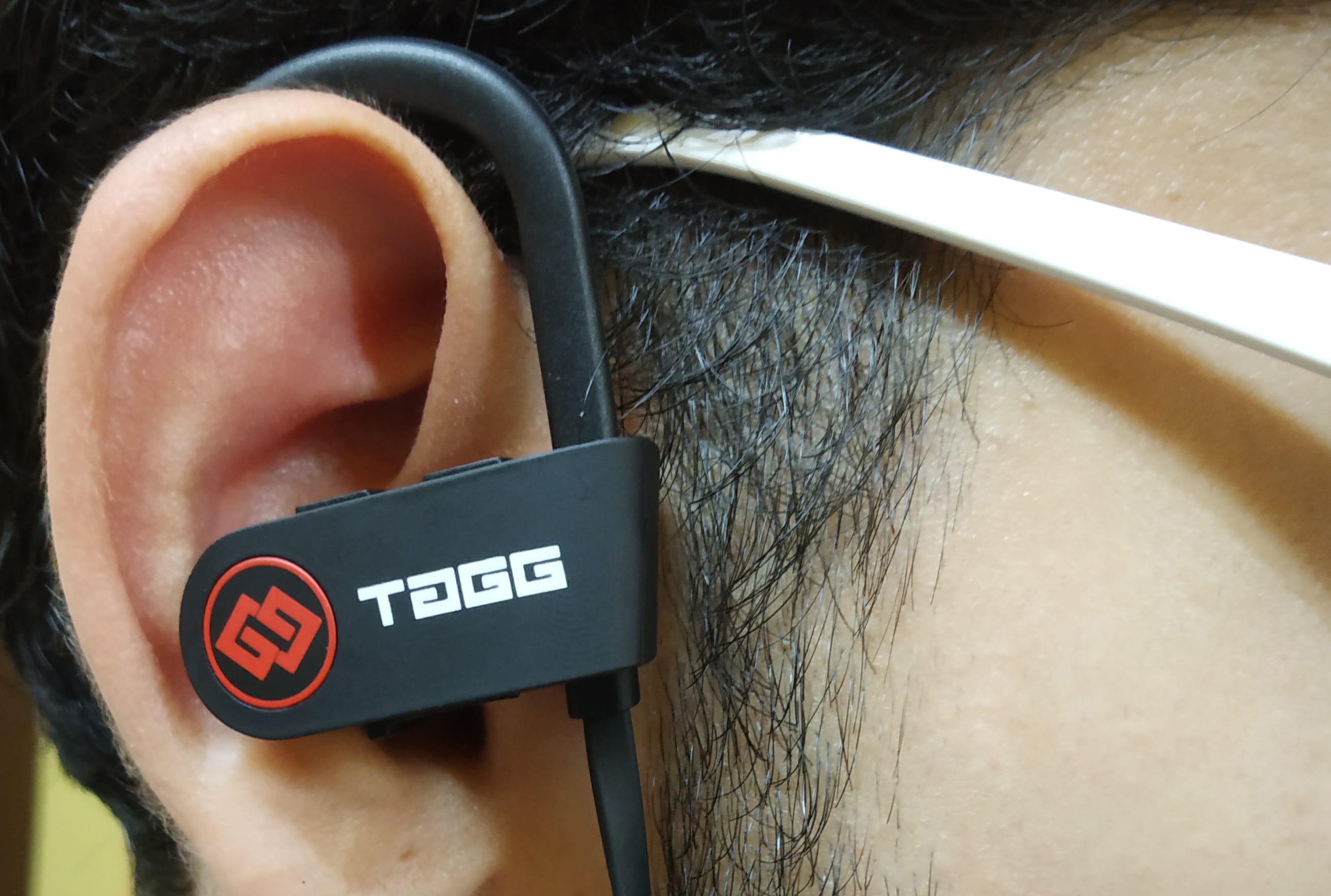TAGG Inferno Review

With more and more manufacturers ditching 3.5 mm headphone jack, Bluetooth seems to be the way to go. Way back in 2012, I bought Nokia BH-111 headset. While it is a great product (I swapped out stock earphones with Sennheiser MX 170), it is showing its age. After a lot of deliberation, I decided to get myself a pair of TAGG Infernos.
Update: If you’re in the market for something more substantial, please check out my review of Sennheiser HD 4.50 BTNC.
First Impressions
The headset comes in a nice and easy to open package. The carrying case contains silicone ear-tips of three different sizes and a charging cable. The ear-tips are soft to touch and seem well made. There aren’t any noticeable seams.
Headset itself is overall well built. The earbuds have soft plastic finish that feels great on ears. The cable is flat and seems to prevent tangles very well. Immediately noticeable are the volume buttons on top of the right earbud. Meanwhile, the power button is completely flush with the surface of the earbud and not easy to notice at a quick glance.
The Technology
Bluetooth has definitely come a long way since 2012. TAGG Inferno comes with Bluetooth 4.1 which is a significant improvement over older generations of Bluetooth, especially Bluetooth 3.0.
Fast Pairing
The fast pairing works as expected. The TAGGs connect instantly with my phone. I found that quite impressive. I still remember the time when Bluetooth pairing was a game of luck. The process went something like this:

Bluetooth Pairing Process
I was pleasantly surprised when the headset connected instantly.
Moreover, should you walk out of the range, the headset connects instantly as soon as you come within the range.
Remote Control

All the controls work flawlessly on iOS and Android devices. Unlike older Bluetooth headsets (which change only the headset volume) volume buttons actually change the device volume. Surprisingly, volume controls work on macOS too! Unfortunately, the headset volume buttons couldn’t change system volume on my older Windows laptop. They did change the headset volume though. I will update here once I’ve had a chance to test on a newer Windows laptop.
Long press of volume buttons triggers Skip and Previous commands. Although this is good enough, the long press may be annoying for repeated skips. I like to put my music on shuffle and just skip through the songs until I find the ones I want to listen to. A dedicated button would be awesome here.
The power button also serves as Play/Pause button. Double pressing this button triggers Redial on phones.
If pressed rapidly, all the buttons seem to miss intermediate presses. I suspect that this may be a design feature to avoid triggering repeated commands.
Microphone and Noise Cancelling
TAGG Inferno comes equipped with CVC 6 noise cancelling technology. This makes the voice calls crisp clear in noisy situations like a windy roof or a crowded gym. However, the microphone is little too quiet when I’m indoor and there isn’t much background noise.
Moreover, the microphone is placed near the ear instead of mouth. This makes the voice appear distant from time to time. Significant improvement can be observed by holding the microphone near mouth. This design issue is something that almost all the wireless headsets suffer from.
Battery
The headset has surprisingly long battery life for such a tiny package. The battery lasted for about two days (and then some to spare) with moderately high usage.

The headset provides multiple ways to check the battery. On phones equipped with Bluetooth 4.1 and above, the battery level indicator up in the status bar. Headset also sends low battery alerts via voice and a red LED. However, this alert is triggered only when battery is almost completely depleted — barely giving the user any time to recharge. The headset barely lasts for 15 minutes after the low battery alert rendering the warning pretty much useless.
An option to enable battery alerts at 20%, 10%, etc. would help a lot.
Sound Quality
Note: Observations below are made by only my ears. No equipment was used. I prefer certain kind of audio and hence, may be biased.
Note: Observations below are made by only my ears. No equipment was used. I prefer certain kind of audio and hence, may be biased.
Bass
The sound quality, unfortunately, is akin to some of the lower end in-ear monitors. While plenty of other reviews complain about the bass, I observed that the drivers produce fairly balanced bass and treble. A proper seal is necessary to experience the optimal bass. So, using ear-tips of appropriate size may improve the experience. I felt the bass to be too boomy — enough to drown out the mids sometimes.
Sound Stage
This is one area where TAGG Inferno lacks severely. Sounds start mixing and fuzzing even at moderate volume levels. At a higher volume level, it is almost impossible to hear different instruments clearly.
In my tests, it was very difficult to listen to podcasts since I couldn’t make out the words without lowering the volume levels. This may not be an option on a noisy commute. I also go through my Pocket list on commutes. Low sound stage coupled with robotic voice of TTS makes it a perfect recipe for a migraine.
Final Thoughts
Moving to wireless headphones from wired ones is a lifestyle change. Lack of wires opens up plenty of new opportunities. However, making this change was relatively expensive — until now.
TAGG Inferno serves as a good stepping stone until you’re ready to fully commit to the wireless lifestyle.
TAGG Inferno serves as a good stepping stone until you’re ready to fully commit to the wireless lifestyle.
There was a huge price gap between wired headsets and Bluetooth headsets. Infernos try to fill that gap and do a pretty decent job at it. But if you’re an audiophile (or just have a taste for good sound) you’ll surely find yourself shopping for something better pretty soon.